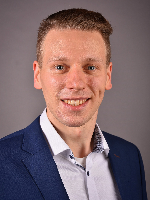
Career
2024 - present: Postdoctoral Researcher and Walter Benjamin Fellow
at University of Cambridge (UK)
in the group of Prof. Colm-Cille Caulfield;
PDRA at Pembroke College
2023 - 2024: Postdoctoral Researcher and Guest Scientist
at University of Technology Ilmenau (Germany)
2020 - 2023: PhD in Theoretical Fluid Mechanics
at University of Technology Ilmenau (Germany)
under the supervision of Prof. Jörg Schumacher
2018 - 2020: MSc in Thermodynamics and Fluid Mechanics
at University of Technology Ilmenau (Germany)
2014 - 2018: BEng in Mechanical Engineering
at University of Applied Sciences Hof (Germany)
Philipp can also be found on Google Scholar, ResearchGate, and LinkedIn.
Past research (PhD)
The interplay of gravity - an inescapable body force that pervades the whole universe - with mass density inhomogeneities - the latter of which are typically caused by thermal heterogeneities - introduces natural (thermal) convection and represents the essential mechanism by which heat is transported in natural flows. Simultaneously, natural flows are often far more extended in the horizontal direction than in the vertical one. Motivated by these two observations and the various geo- and astrophysical applications (e.g. the solar convection zone), Philipp's work was dedicated to improving our understanding of pattern formation and heat transport in horizontally extended, unstably stratified Rayleigh-Bénard convection (as a paradigm of thermal convection) by the use of three-dimensional direct numerical simulations.
Most importantly, he found that thermal boundary conditions are crucial to the formation of long-living large-scale (turbulent) flow structures and traced one mechanism of self-organisation of flow structures back to secondary instabilities as well as an inverse cascade in spectral or Fourier space. Additionally, he worked on the identification of those large-scale flow structures by the use of unsupervised machine learning based on Lagrangian particle data.
His fundamental research required performing simulations on up to 131,072 CPUs in parallel with a peak memory footprint of $181$ TB during runtime and a maximum degree of freedom of $N_{\textrm{dof}} \approx 7.2 \times 10^{10}$.
Current research
Philipp collaborates with Prof. Colm-Cille Caulfield. Motivated by geophysical applications, he aims to improve our understanding of pattern formation and mixing in horizontally extended, stably stratified, and shear-driven turbulence by means of direct numerical simulations.
